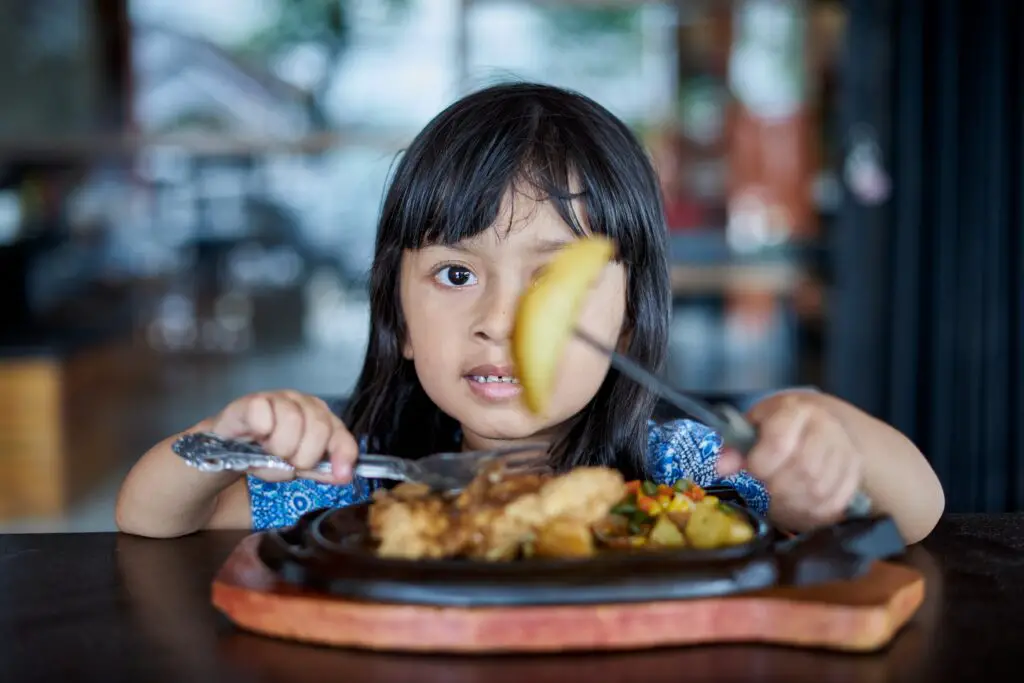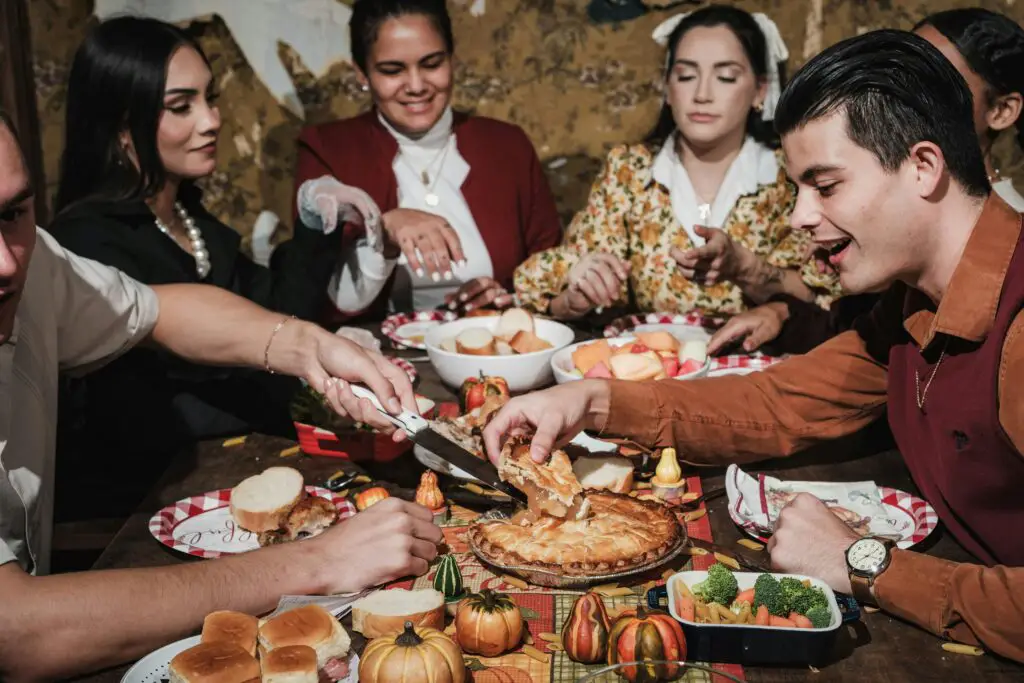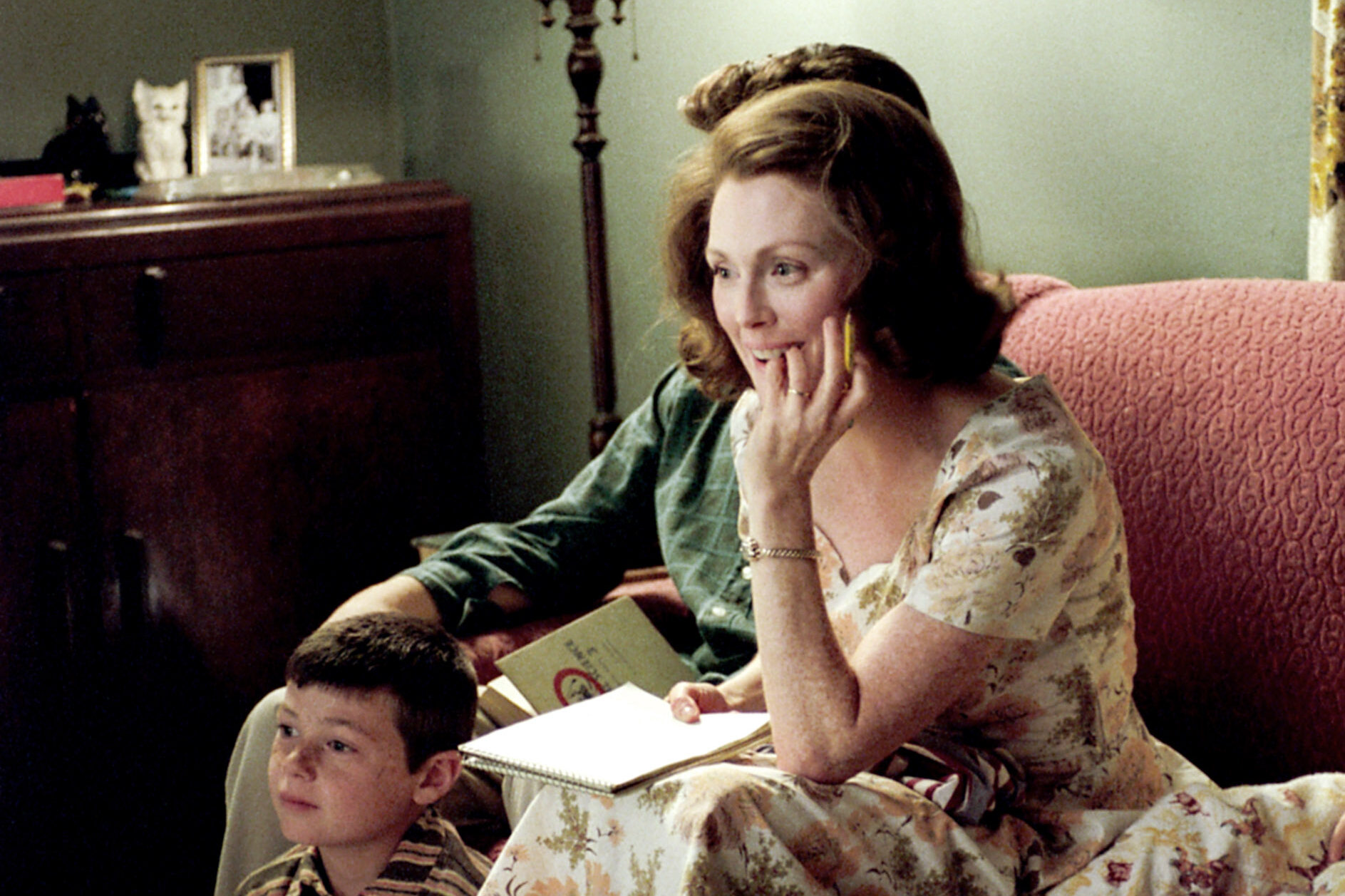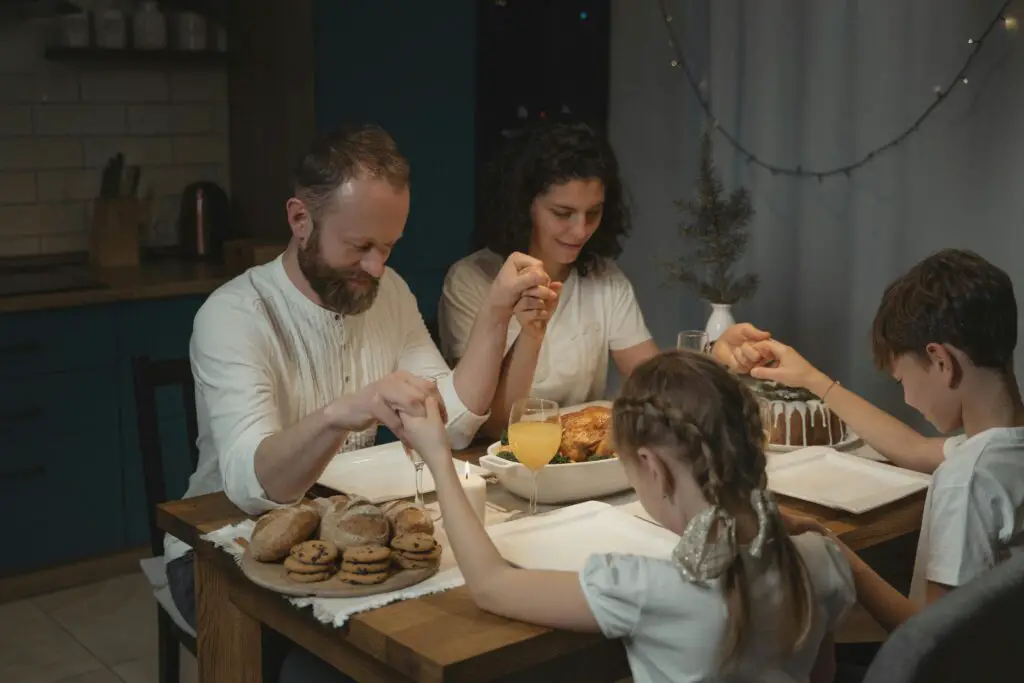1. No Talking Until Everyone Is Seated

In the ’60s, dinner time was a time for family unity, and that meant no conversation until everyone was seated at the table. Parents made it clear that all members of the family, especially kids, had to wait for the head of the household to sit down before they could start talking. This practice was rooted in a sense of respect for the meal and the importance of family gatherings. Dinner was seen as a structured time for bonding, and speaking before everyone was settled was considered disrespectful.
Children learned early that they needed to wait for the “okay” to begin eating. This simple rule encouraged patience, and kids quickly understood that there was a rhythm to family meals. It was about more than just food; it was about taking the time to connect as a family without distractions or interruptions.
2. No Elbows on the Table

A classic rule that every ’60s kid could count on was the “no elbows on the table” rule. It was considered improper table manners to rest your elbows while eating, as it was thought to be a sign of laziness or rudeness. Children were taught to sit up straight, keeping their posture proper and respectful while dining. Parents emphasized that good posture during meals demonstrated self-control and respect for the food.
While it may seem trivial today, this rule was an essential part of teaching children how to behave in social settings. Sitting up straight and keeping elbows off the table helped children present themselves as polite and well-mannered in front of guests, at family gatherings, and especially at school.
3. No Speaking with Your Mouth Full

The cardinal rule of table manners in the ’60s, and likely still today, was no speaking with your mouth full. Children were taught from a young age that it was not only unsightly but also rude to talk while chewing. It was considered a sign of poor manners, and parents were quick to correct their kids if they forgot this important rule.
This wasn’t just about aesthetics—speaking with a full mouth was also seen as unsanitary. Teaching children to chew with their mouths closed and to wait until they had swallowed before speaking helped instill good hygiene habits. This rule reinforced the idea of being mindful of the people around you, encouraging polite, respectful dining.
4. Wait for “Please Pass the Salt”

At the dinner table in the 1960s, kids learned the importance of manners when requesting something. You couldn’t just reach across the table for the salt or any other dish you wanted. Instead, you had to ask politely, often with a “please” attached. This simple rule reinforced respect for the family members around the table and taught children to wait their turn.
This was part of a larger lesson in patience and humility. By waiting for others to offer or pass things, children learned that not everything was theirs for the taking and that good things often required polite requests. Saying “please” was a way of showing gratitude for the meal and everything that went into it.
5. Always Use a Napkin

The napkin was an essential tool at any ’60s dinner table, and kids were expected to use it, not just for cleaning up after eating but also to show respect for the meal. Dinner time was formal, and proper napkin etiquette meant that children were expected to use the napkin for wiping their hands and face, rather than their sleeves or hands. This wasn’t just about cleanliness; it was about maintaining a neat and tidy appearance throughout the meal.
Parents made sure that their children didn’t forget to place the napkin on their laps as soon as they sat down. It was seen as a small but important gesture that showed children had the discipline to follow a set of expectations, and it was often one of the first rules drilled into kids during meal times.
6. No Interrupting When Adults Are Talking

In the 1960s, children were taught to remain quiet and listen respectfully when adults were talking. Interrupting was seen as a sign of disrespect, and children who did so were quickly corrected. It wasn’t just about the dinner table—it was a life lesson that carried over to other social situations. Learning to listen before speaking helped children develop patience and taught them that their time would come to speak.
This rule encouraged children to take in the conversation around them and to contribute thoughtfully. By not interrupting, kids learned how to be part of a conversation and the importance of waiting for the right moment to speak. It was also a way of showing respect for the wisdom and experience of the adults in their lives.
7. Never Reach Across Someone

Another dinner table rule that was enforced during the ’60s was the prohibition against reaching across someone’s plate. If you wanted something, you asked for it to be passed to you, rather than leaning over someone else’s plate to grab it. This rule was not just about manners but about personal space and consideration for others.
It was considered improper to reach over someone, as it could be seen as an invasion of personal space. By asking for something to be passed, children learned the importance of boundaries, respect, and maintaining decorum at the table. It also taught them to be patient and not to take shortcuts in social interactions.
8. Always Say “Thank You” for the Meal

In the ’60s, saying “thank you” for the meal was an important custom that was expected of children after dinner. It was a way of showing appreciation for the time, effort, and resources that went into preparing the meal. Parents would often prompt their children to say this as soon as the meal was finished, reinforcing the value of gratitude.
This simple rule not only taught kids the importance of being grateful but also encouraged them to recognize the effort behind family traditions. Whether it was a home-cooked meal or something special, saying “thank you” was an expression of respect for the person who made the meal and for the food itself.
9. No Complaining About the Food

In the ’60s, it was unheard of for children to complain about the food on their plate. If you didn’t like something, you were expected to eat it anyway without making a fuss. Parents would often remind their kids, “There are starving children who would be grateful for this,” as a way of reinforcing the importance of gratitude and not taking food for granted.
This rule wasn’t just about teaching kids to appreciate what they had—it was also about respecting the time and effort that went into preparing meals. Complaints at the table were seen as impolite and ungrateful, and children quickly learned that mealtime was not the time to voice dissatisfaction.
10. Sit at the Table Until Everyone Is Done

One of the more rigid rules of the ’60s dinner table was that children were not allowed to leave the table until everyone had finished eating. It was a way of encouraging family bonding and ensuring that meals were shared as a group. Kids learned the importance of patience and respect for others by waiting until the last person was done eating.
This rule also helped foster a sense of togetherness, as everyone had to sit together and share the experience of the meal. It was an unspoken understanding that mealtime was about more than just eating—it was about spending time together, engaging in conversation, and enjoying each other’s company.
11. No Gum at the Dinner Table

Chewing gum was a big no-no at the dinner table in the 1960s. It was seen as distracting and disrespectful, as it could make noise or look untidy while eating. Parents would remind children to leave their gum in the kitchen or in the trash before coming to the table, ensuring that the focus stayed on the meal and conversation.
This rule was part of a broader cultural emphasis on cleanliness and proper behavior. Chewing gum was often associated with more casual or rebellious behavior, and dinner time was meant to be a formal and respectful occasion. Kids were expected to keep their attention on the meal, not their gum.
12. No TV During Meals

Unlike the present day, where it’s common to watch TV during dinner, the ’60s were all about family time during meals. The television was turned off, and all attention was focused on the table. This was a time for conversation, reflection, and connection, and parents often enforced the rule that TV should not be on while the family was eating.
This rule helped establish a routine that valued face-to-face interaction over passive entertainment. Family meals were seen as a time to engage with one another and catch up on the day’s events, and the television, often a distraction, was reserved for later.
13. Don’t Speak Until You’re Asked

This rule was a part of the overall formality of dinner in the ’60s. Children were expected to wait to be spoken to before contributing to the conversation, and it was considered rude to speak up without being invited. This helped ensure that conversations were orderly and that children listened more than they spoke during meals.
While it may sound strict, this rule was part of a broader cultural norm of encouraging respect for adults and promoting good listening habits. Children learned that their thoughts were valuable but that timing and context were key in participating in conversations.
14. No Playing with Your Food

Perhaps one of the most common and enduring rules from the 1960s dinner table was no playing with your food. This was not only about being polite; it was about showing respect for the meal and the people around you. Kids were expected to eat their food, not manipulate it, or make a mess at the table.
This rule also helped to instill discipline and encouraged children to focus on the meal at hand. It was a time to be present and mindful, to appreciate what was on the plate, and to avoid distractions that could derail the meal.
